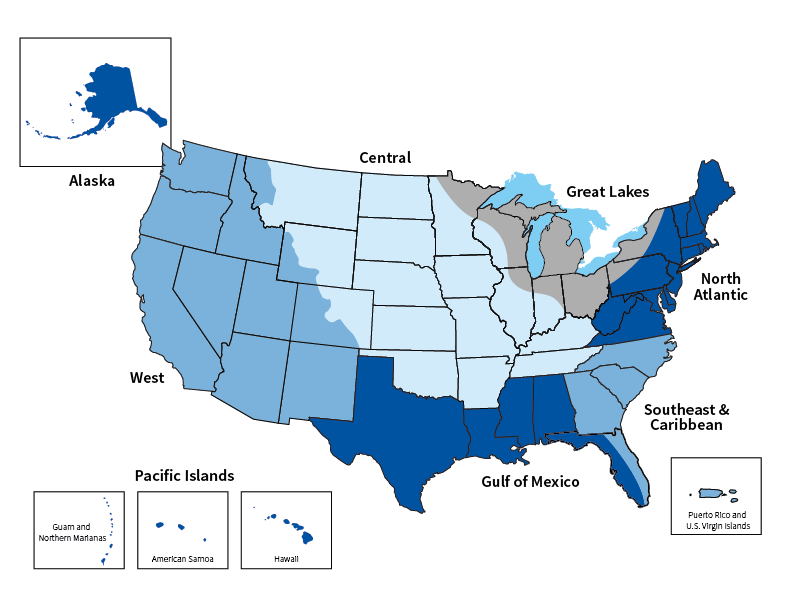
Alaska Region
Extending to the Arctic, Alaska’s culturally-diverse people, infrastructure, economy, and ecosystems are already experiencing the effects of climate change. Obtaining a better understanding of these early impacts will provide an integration of science and decision-making for adaptation on a global scale.
Central Region
NOAA’s Central region includes the “bread basket” of the Nation. A significant portion of the Nation’s agriculture, particularly wheat and corn, comes from this region. In addition to agriculture, an integrated advanced technology corridor stretches along the Front Range of the Rockies, with assets and commercial interests in climate research and space environment.
Great Lakes Region
While the Great Lakes region has been a leader for innovative science and advances in natural resources management, there are still significant gaps in knowledge about ecological processes and key indicators of ecosystem health. The Great Lakes face new and emerging problems due to the effects of climate change, including potentially changing long-term water levels and the timing and duration of weather events.
Gulf of Mexico Region
The Gulf of Mexico provides the Nation with valuable energy resources, tasty seafood, extraordinary beaches and leisure activities, and a rich cultural heritage. It is also home to some of the most devastating weather in the Nation, including the most costly natural disaster in U.S. history.
North Atlantic Region
NOAA's North Atlantic region extends from Maine to Virginia and is rich with history, culture, and economic opportunities. It is home to more than 70 million people, more than 80 percent of which live in the region's 180 coastal counties.
Pacific Island Region
The Pacific Islands region is the largest NOAA region geographically, encompassing 50 percent of the US Exclusive Economic Zone. This unique geography is also tied to a high vulnerability to hazards and climate variability that threatens the islands’ endemic species and high number of endangered species.
Southeast & Caribbean
The Southeast and Caribbean region is one of the fastest growing in the US, with a rapidly transforming economic base. Increasing population, particularly along coasts, drives a strong demand for ecosystem services, and puts more people at risk to hazards and changing climate.
Western Region
In many regards, the West is still “wild” with over 753 million acres of land held by the Federal government in public trust, much of which is managed as national parks and forests. From the deserts to the coastal temperate rain forests, the West is characterized by numerous distinct and complex terrestrial and marine ecosystems.


